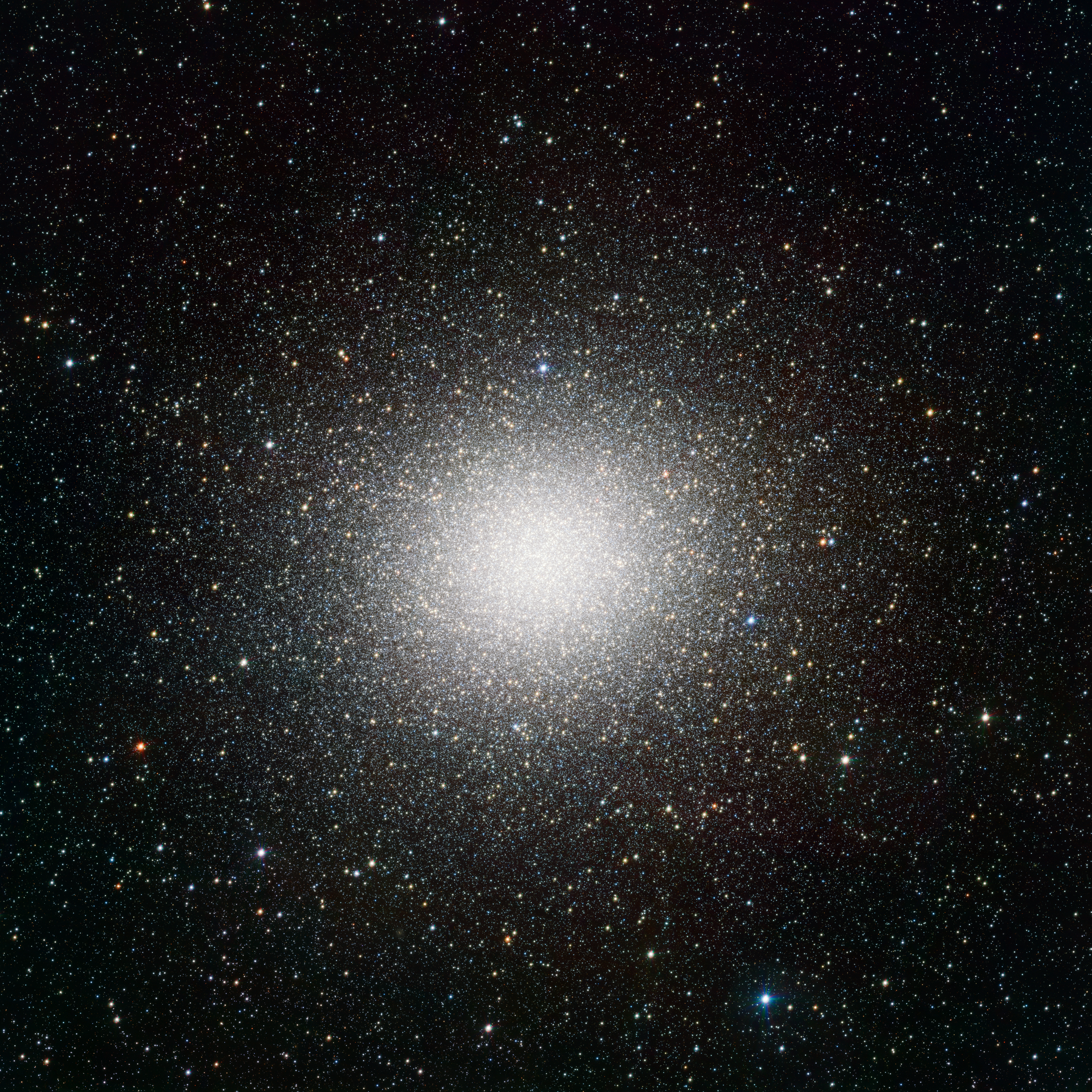New Telescope in Chile Unveils Stunning First Images

A new state-of-the-art telescope has snapped its first impressive images of the southern sky over the Paranal Observatory in Chile.
The VLT Survey Telescope (VST) is the latest addition to the European Southern Observatory's network of telescopes at Paranal in the Atacama Desert of northern Chile. The first image released from the VST shows the spectacular star-forming region Messier 17, also known as the Omega nebula or the Swan nebula, as it has never been seen before.
This nebula, full of gas, dust and hot young stars, lies in the heart of our Milky Way galaxy, in the constellation of Sagittarius (The Archer). The VST's field of view is so large that is able to observe the entire nebula, including its fainter outer parts. [See the first VLT Survey Telescope photos]
The second of the newly released images is a portrait of the star cluster Omega Centauri in unprecedented detail. Omega Centauri is the largest globular cluster in the sky and the VST's view includes about 300,000 stars.

ESO's new telescope
The VST is a 2.6-meter telescope with a 268-megapixel camera, called OmegaCAM, at its core. The visible-light telescope is designed to map the sky both quickly and with precise image quality. [Video: Massive Skywatching Camera's Amazing Imagery]
"The superb images now coming from VST and OmegaCAM are a tribute to the hard work of many groups around Europe over many years," said Massimo Capaccioli, principal investigator of the VST project. "We are now looking forward to a rich harvest of science and unexpected discoveries from the VST surveys."
Get the Space.com Newsletter
Breaking space news, the latest updates on rocket launches, skywatching events and more!
The VST is a wide-field survey telescope with a field of view twice as broad as the full moon. It is the largest telescope in the world designed to exclusively survey the sky in visible light.
"I am very pleased to see the impressive first images from the VST and OmegaCAM," ESO director general Tim de Zeeuw said in a statement. "The unique combination of the VST and the VISTA infrared survey telescope will allow many interesting objects to be identified for more detailed follow-up observations with the powerful telescopes of the [Very Large Telescope]."
ESO officials oversee many telescopes based at three observing sites in Chile's high Atacama Desert. In addition to the telescopes atop the summit of Cerro Paranal, the observatory has sites at La Silla and Chajnantor.
Mapping the cosmos
Over the next five years, the VST and its OmegaCAM will make three detailed surveys of the southern sky, and the data will be made public for astronomers around the world to analyze.
The KIDS survey will image several regions of the sky away from the Milky Way. The study aims to further astronomers' understanding of dark matter, dark energy and galaxy evolution, and find many new galaxy clusters.
The VST ATLAS survey will cover a larger area of sky and focus on understanding dark energy and supporting more detailed studies using the VLT and other telescopes. The third survey, VPHAS+, will image the central plane of the Milky Way to map the structure of the galactic disc and its star formation history. VPHAS+ will yield a catalogue of around 500 million objects and is expected to discover many new examples of unusual stars at all stages of their evolution.
“The combination of large field of view, excellent image quality, and the very efficient operations scheme of the VST will produce an enormous wealth of information that will advance many fields of astrophysics,” said Konrad Kuijken, head of the OmegaCAM consortium.
The VST project is a joint venture between ESO and the National Institute for Astrophysics (INAF) in Naples, Italy.
Follow SPACE.com for the latest in space science and exploration news on Twitter @Spacedotcom and on Facebook.
Join our Space Forums to keep talking space on the latest missions, night sky and more! And if you have a news tip, correction or comment, let us know at: community@space.com.

Space.com is the premier source of space exploration, innovation and astronomy news, chronicling (and celebrating) humanity's ongoing expansion across the final frontier. Originally founded in 1999, Space.com is, and always has been, the passion of writers and editors who are space fans and also trained journalists. Our current news team consists of Editor-in-Chief Tariq Malik; Editor Hanneke Weitering, Senior Space Writer Mike Wall; Senior Writer Meghan Bartels; Senior Writer Chelsea Gohd, Senior Writer Tereza Pultarova and Staff Writer Alexander Cox, focusing on e-commerce. Senior Producer Steve Spaleta oversees our space videos, with Diana Whitcroft as our Social Media Editor.
